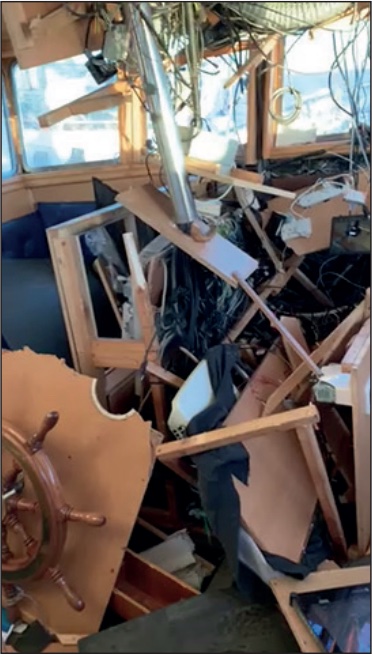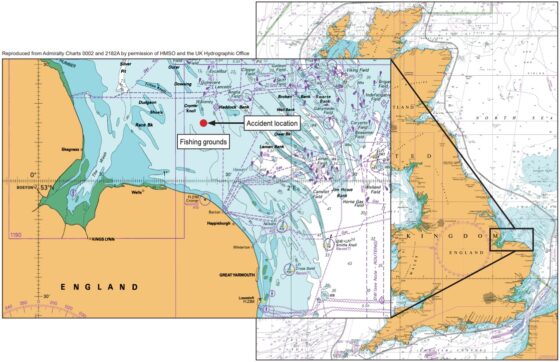
Norfolk crabbing vessel detonated World War II bomb, report finds

A report released by the Marine Accident Investigation Branch (MAIB) has concluded that a subsea explosion, resulting in crew injuries and damage to the crab potting vessel Galwad-Y-Mor (BRD 116), 22 nautical miles north of Cromer, Norfolk, on 15 December 2020, was due to crabbing gear disturbing an unexploded WWII bomb.
The gear disturbed the 250kg bomb, which detonated on the seabed below the vessel.
It is reported that the ensuing explosion caused a shockwave that threw Galwad-Y-Mor about, resulting in significant injuries to five of the seven crew and major damage to the vessel’s hull and machinery. Despite their injuries, Galwad-Y-Mor’s crew were able to send a distress message, launch the liferaft and board rescue boats that had been dispatched by a nearby offshore support vessel. The injured crew were transferred to hospital by helicopter and RNLI lifeboat where they were treated for head, back and knee injuries.

Although extensively damaged and flooded, the report states that it’s very likely Galwad-Y-Mor stayed afloat because the bulkheads either side of the engine room maintained their watertight integrity, containing the flood. The abandoned vessel, which had settled low in the water, was successfully salvaged and has been rebuilt.
The report states that unexploded ordnance (UXO) can be highly volatile even after many years of being submersed. In the event of encountering a UXO, seafarers are advised to follow the recommendations in MGN 323 (M+F) Explosives Picked Up At Sea.
It is concluded that Galwad-Y-Mor‘s crew could not have anticipated the fouling of a bomb in the potting string and the resulting explosion; the crew’s training, experience and emergency preparedness improved their chances of survival.

Images courtesy of Marine Accident Investigation Branch.
